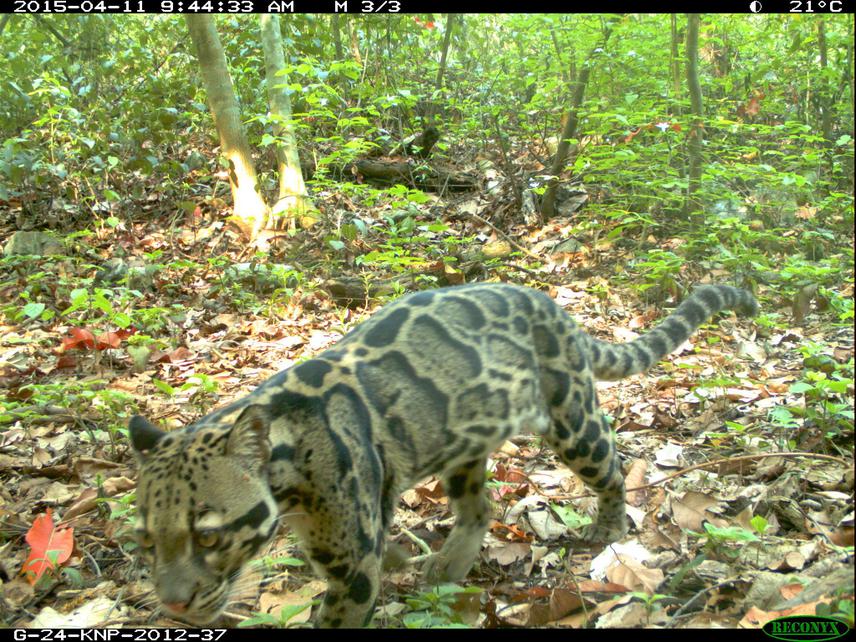Tshewang Jaimo
This project will assess the abundance and distribution of clouded leopard (Neofelis nebulosa) in Royal Manas National Park, Bhutan. The information generated from this project be useful for planning long term conservation strategy of felids in the park.

The clouded leopard (Neofelis nebulosa) medium size cats, about a size of a small leopard. Due to its highly secretive nocturnal nature and arboreal in habit, the sighting is very rare. Even the camera trap survey conducted for tiger has captured them comparatively less than other small cats. This is either indicative of less population or more threats are prevalent in the parks. As such, there is urgent need for assessment of its distribution and abundance to look at possible interventions to manage their population. Globally, their population is found decreasing mainly because of their strong association with the primary tropical forest which is rapidly disappearing across its range. The baseline data is very much essential to monitor its population and distribution in the long run.
The information generated from this study will form baseline for long term planning of felids conservation in Royal Manas National Park and for Bhutan at large. Such information will also be useful for the regions with similar landscape to set priority for conservation actions. Specifically the project will generate information on the distribution pattern, habitat use and population abundance in Royal Manas National Park. The park management can use this information to plan habitat conservation intervention. It will also be useful for the park management to conduct further research on their behaviour ecology and population dynamics.
The reason for lack of study on the clouded leopards is due to its elusive nature and relative rarity. In RMNP there has been very few evidences to prove its presence but there is total lack of information on habitat type and its distribution. As such the population status is not known and the park management does not have any baseline information to put conservation intervention in place. The proposed project will generate baseline information that will enable park management to conduct further research. The line transect survey will be conducted across the entire study area using the existing patrolling trails. The camera traps will be installed within 2 km x 2 km grid. The survey is expected to take about 12 months.